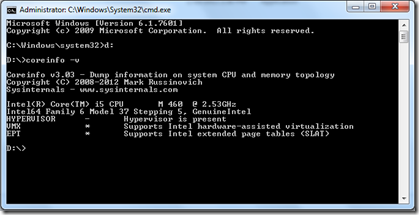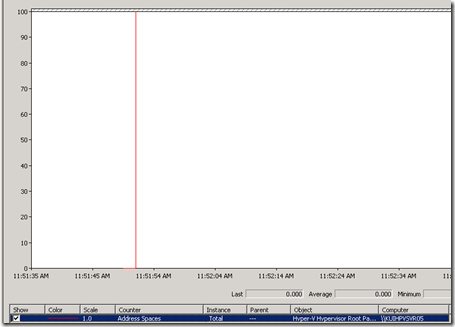Microsoft Synthetic 3D Display Controller : Failed to Power on with Error ‘Unspecified Error’
This article, I want to share of you my experience deployment in my one of my client. I have Deploy VDI (Virtual Desktop Interface), RDS (Remote Desktop Services). I have deploy about 5 virtualization in hyper-v, and I use remote FX, but while I start power on in virtualization I get error like picture below
Microsoft Synthetic 3D Display Controller : Failed to Power on with Error ‘Unspecified Error’
I try to find resolve issue in Google, finally I find the solve problem from Microsoft, please check here http://support.microsoft.com/kb/2505030
TechNet say it
The processor in the RemoteFX server must support SLAT. In virtualization scenarios, hardware-based SLAT support improves performance. On Intel processors, these are known as Extended Page Tables (EPT), and on AMD processors, they are called Nested Page Tables (NPT).
so where do you know my processor not support SLAT, after I ask my uncle is Google ![]()
Requirements Remote FX (http://en.wikipedia.org/wiki/RemoteFX)
Implementation of the RemoteFX codec for RDSH does not require any special hardware, and leverages the CPU for encoding. The RemoteFX codec can be optionally hardware-accelerated by a GPU or ASIC for RDVH scenarios.[5]
Implementation of the virtual GPU for VMs has the following requirements:[6]
- Hyper-V must be installed on the server.
- The server’s CPU must support Second Level Address Translation (SLAT).
- At least one DirectX 9.0c and 10.0 capable graphics card must be installed on the server.
- A RemoteFX encoder ASIC may also be optionally installed to further accelerate encoding.
Second Level Address Translation (http://en.wikipedia.org/wiki/Second_Level_Address_Translation)
SLAT stands for "Second Level Address Translation".
Intel calls their SLAT technology EPT (Extended Page Table) . This technology was introduced in the Nehalem microarchitecture found in certain Core i7, Core i5, and Core i3 processors.
AMD, beginning with their third generation Opteron processors (code name Barcelona) support SLAT through their Rapid Virtualization Indexing (RVI) technology.
I find 2 way to check my Processor not support SLAT.
1. I can use 3rd party application from Microsoft named Coreinfo, you can download from here http://technet.microsoft.com/en-us/sysinternals/cc835722 it’s free ![]() .
.
after you download please install the application and run command prompt use administrator. and type coreinfo –v and there you will get your processor support or not support SLAT.
2. I follow this link http://www.windowsitpro.com/article/virtualization2/Q-How-can-I-tell-if-my-Windows-Server-2008-R2-Hyper-V-implementation-is-using-Second-Level-Address-Translation-SLAT-.aspx
I used performance monitor, and add counters and choose Hyper-v Hypervisor Root Partition and click Address Space
To check if SLAT is being used, you can look at the Hyper-V Hypervisor Root Partition counter group and the Address Spaces counter. If SLAT is being used, the Address Spaces counter will be 0, as this picture shows.
If SLAT isn’t being used, a value will be present, as this picture shows.






I am looking for an investor for my invention, three-dimensional display. If you and/or your Corporation and/or its partners invest in my invention, you will be entitled to an amount of profit share on which we agree from any profit I obtain from manufacturing of my invention. If you and/or your Corporation and/or its partners help me find an investor for my invention, you and/or your Corporation and/or its partners will be entitled to an amount of profit share on which we agree from any profit I obtain from manufacturing of my invention. I claim that my design of a three-dimensional display achieves both depth resolution and image resolution equal to the maximum visible by a human viewer, negligible crosstalk, negligible aberrations, and proper Modulation Transfer Function, etc.. I am the inventor and the owner of all right, title, and interest in the following U.S. patent, which discloses this my invention: Mihajlovic, Zoran, Three-dimensional autostereoscopic display and method for reducing crosstalk in three-dimensional displays and in other similar electro-optical devices, U.S. Patent No. 7,839,549, filed October 20, 2006, and issued by the U.S. Patent and Trademark Office on November 23, 2010.
( More information about my invention can be found for example at the Internet address http://www.nyx.net/~zmihajlo )
sory, i dont have money
Kind of a random thought, but exactly how long did it took you to produce this?
Keep up the fantastic job!!